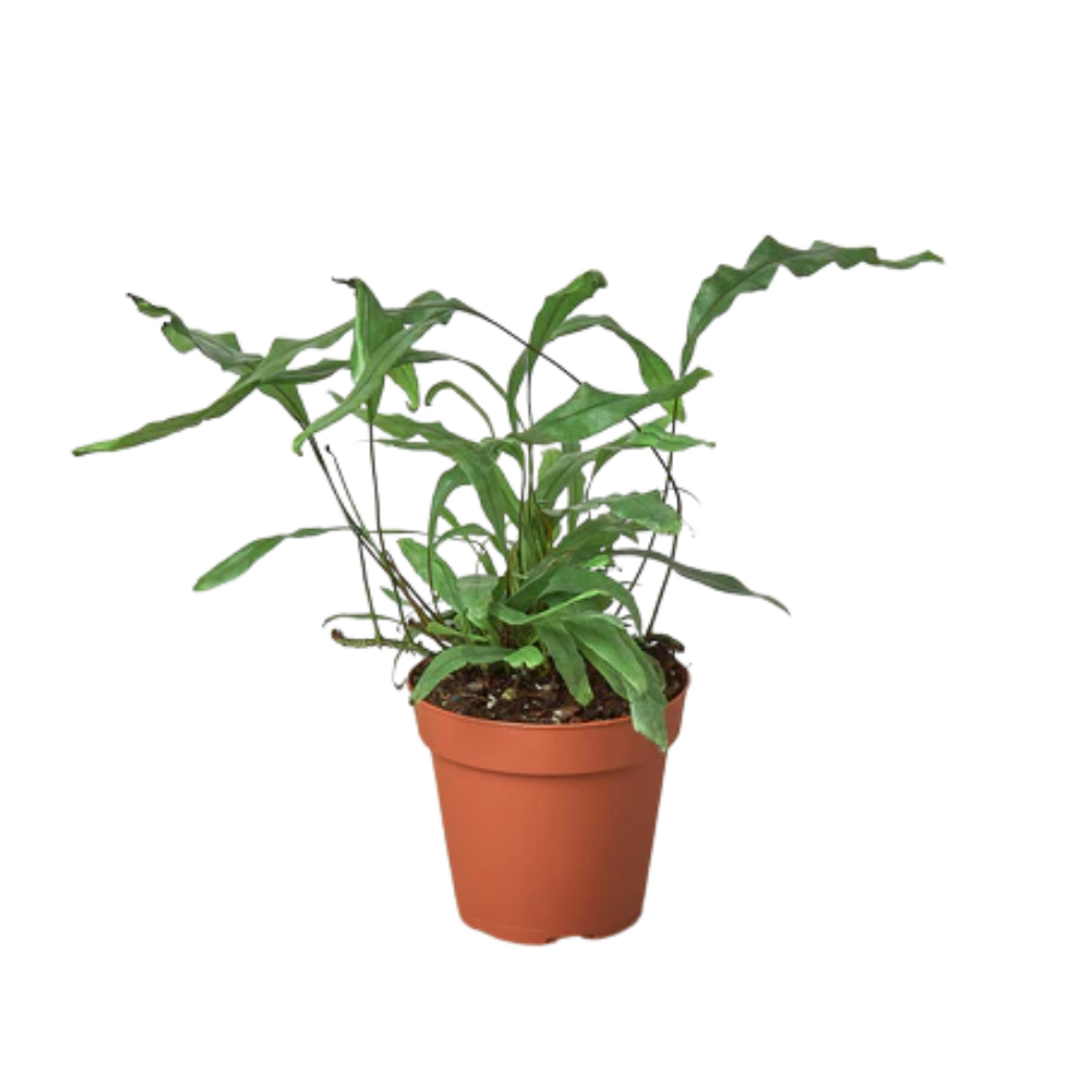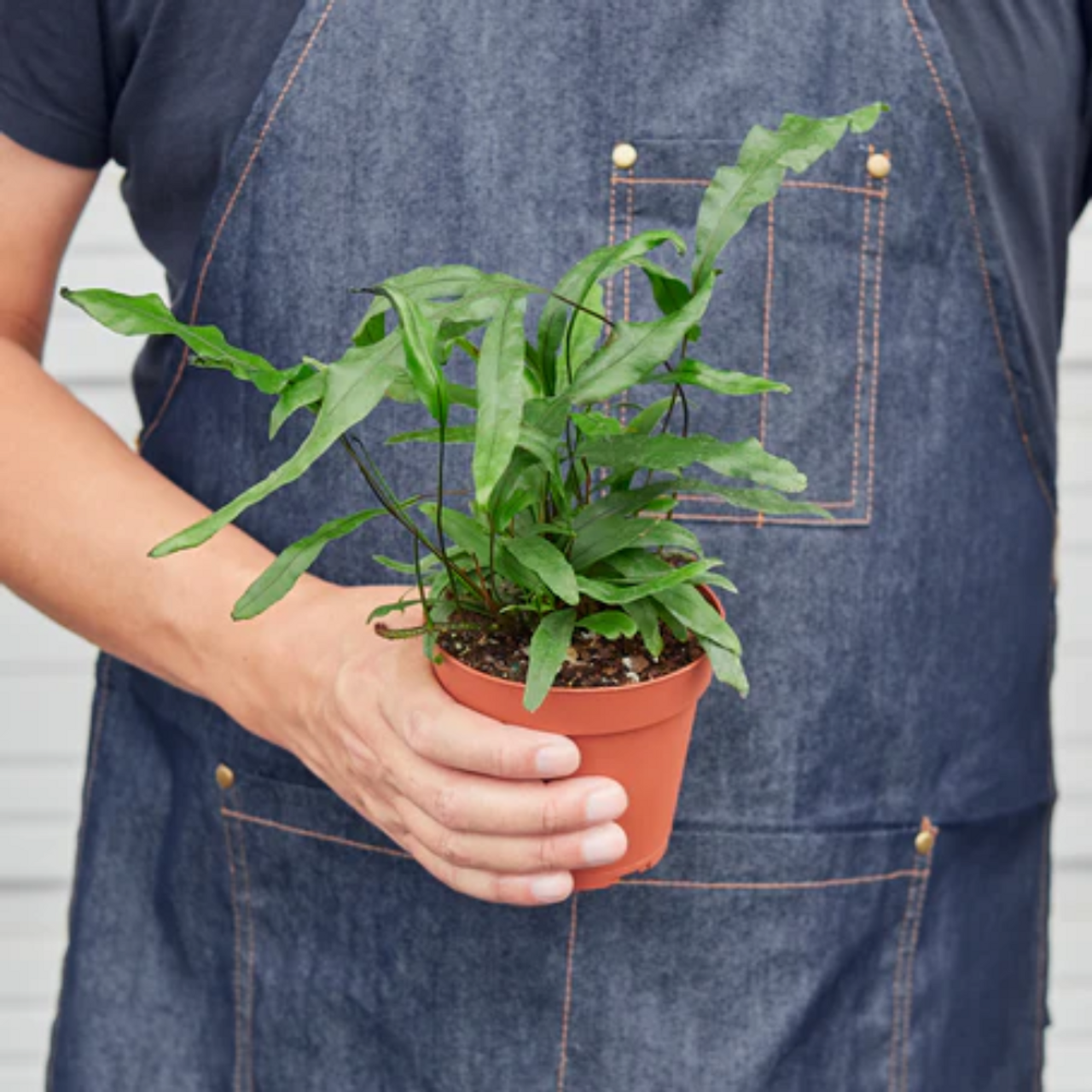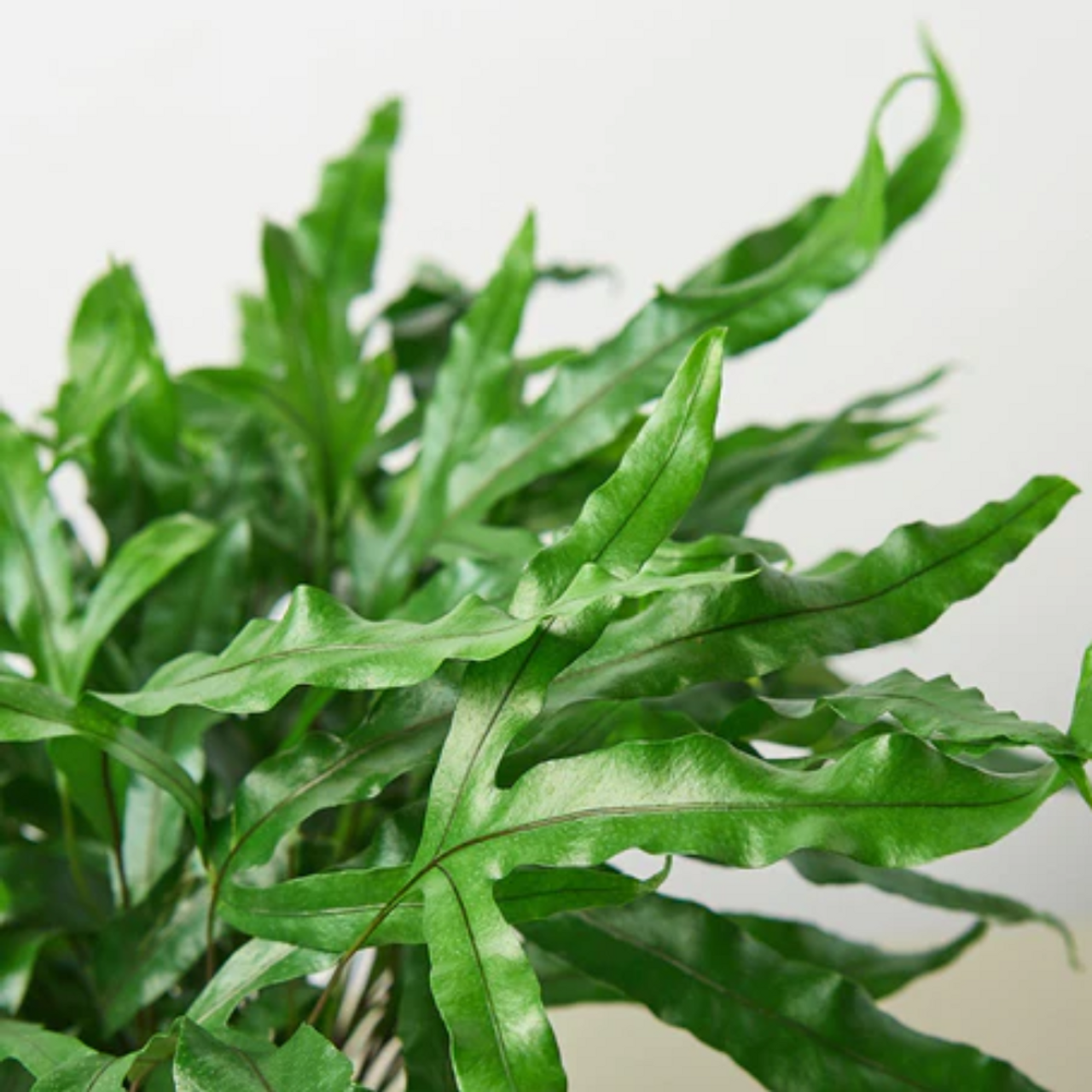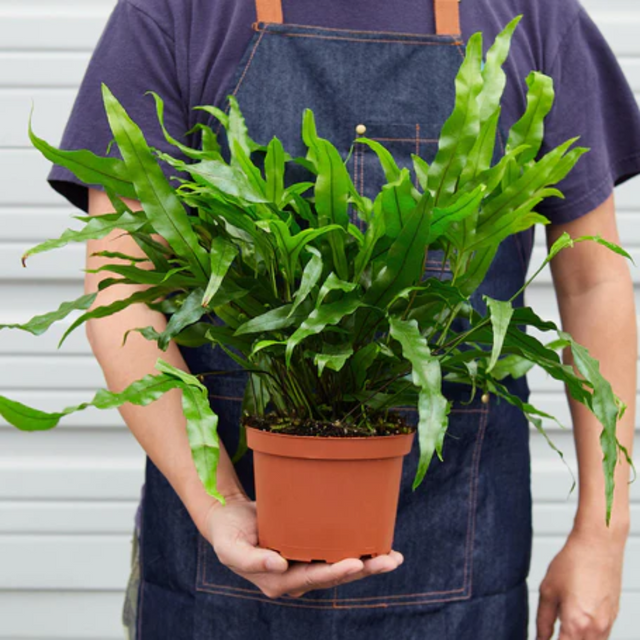Description
Kangaroo Paw Fern grows fuzzy rhizomes on the surface of the soil. These roots hold extra moisture and resemble Kangaroo paws. Large, leathery leaves are produced year-round, giving this fern a tropical feel. During the summer, Kangaroo Paw Fern forms very pronounced spores along the underside of its fronds. These can be collected and planted to propagate new plants if you want a challenge.
Best Locations For Growing Kangaroo Paw Fern
Rooms with naturally high humidity, like bathrooms and kitchens are perfect for ferns. This one is better adapted to the lower humidity of a living room or bedroom and works in just about any space. Kangaroo Paw is considered non-toxic and is an excellent air-purifying plant.
Kangaroo Paw Fern Sunlight Requirements
Place this plant in any light level, from filtered bright light to low light. North, east, or west-facing windows are ideal, although Kangaroo Paw will grow well in a room with southern exposure, away from the window.
Kangaroo Paw Fern Care
Repotting is only needed when the potting soil cannot retain moisture. The fern’s roots growing out of the pot need air and are not an indicator that the plant is pot-bound. Many gardeners prefer to grow this fern in unglazed terra cotta pots that naturally circulate more air and are quicker to drain after watering. Do not bury all of the fuzzy rhizomes when repotting. Encourage some to hang over the sides of the pot or lay across the soil.
Watering Kangaroo Paw Fern
The soil needs to stay slightly moist for this fern. Watering the pot from the bottom in a basin of room-temperature water is the perfect technique. This will prevent the rhizomes from getting wet and rotting while providing moisture for the smooth roots under the soil. Watering once a week is typical year-round. Increase the humidity around this fern using pebble trays or a portable room humidifier.
Feeding kangaroo Paw Fern
Fertilize only in the spring and summer while the growth is at its fastest; every 4-6 weeks, use a diluted, liquid fertilizer formulated for houseplants. Choose a balanced fertilizer with an NPK ratio of 10-10-10.
Additional information
| Container Size | 3" Pot, 4" Pot, 6" Pot, 8" Pot, 10" Pot |
|---|
Reviews (0)
Be the first to review “Kangaroo Paw Fern” Cancel reply
Related products
Easy Care Houseplants
Easy Care Houseplants
Easy Care Houseplants
Easy Care Houseplants
Easy Care Houseplants
Easy Care Houseplants
Easy Care Houseplants
Easy Care Houseplants
























Reviews
There are no reviews yet.